Review: Why Cycles Wayward
Originally posted on November 11, 2019 at 23:10 pmThe Wayward from Why Cycles is a plus-sized bikepacking bike from Carbondale, Colorado-based Why Cycles. Why was founded in 2016 by Adam Miller and Greg Herman who were previously behind Borealis, a brand that sold innovative super-light carbon fat bikes at a time when most fat bikes were steel and weighed more than a barrel of monkeys. After selling Borealis, they’re back at it, this time with a range of titanium bikes.
THE BIKE
The Wayward is beautiful. The welds are smooth, and Why nailed little details like welding the bottle cage bosses instead of attaching them with rivnuts. The branding is laser etched so the straps of a frame bag won’t wear it away, and the integrated head badge is pretty.
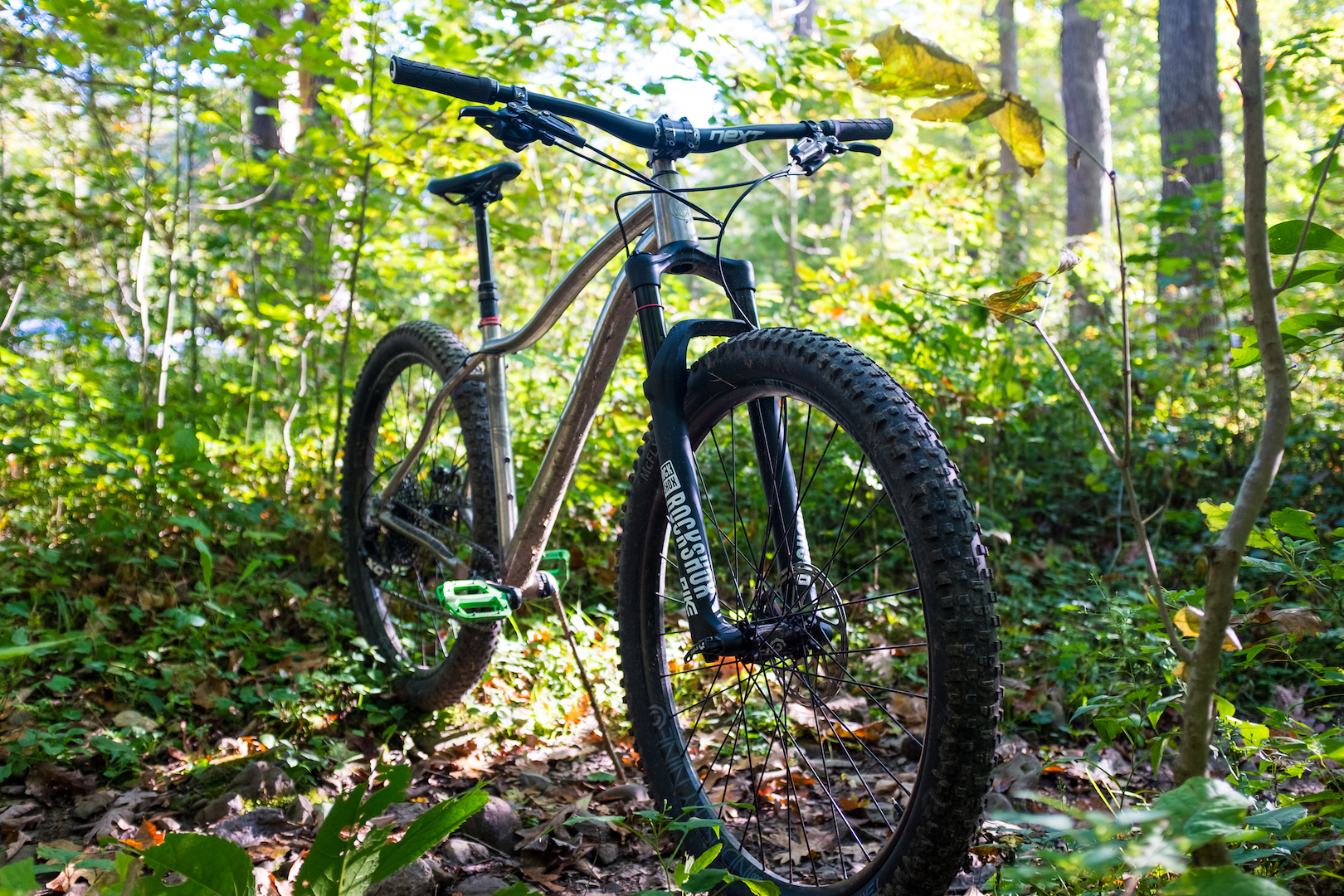
All cables and hoses are routed internally and nicely done. The brake line and shift housing pop out of the seat tube seat stay junction smoothly and symmetrically. Although the brake line and shift housing are internally sleeved for easier installation, I did notice the stealth-routed dropper hose slapping around in the down tube on rougher terrain. It’s aesthetically pleasing, but the downside to even well-designed internal routing is the extra effort required to switch out a bad brake; the hydro line needs to be cut, and a new compression fitting installed.
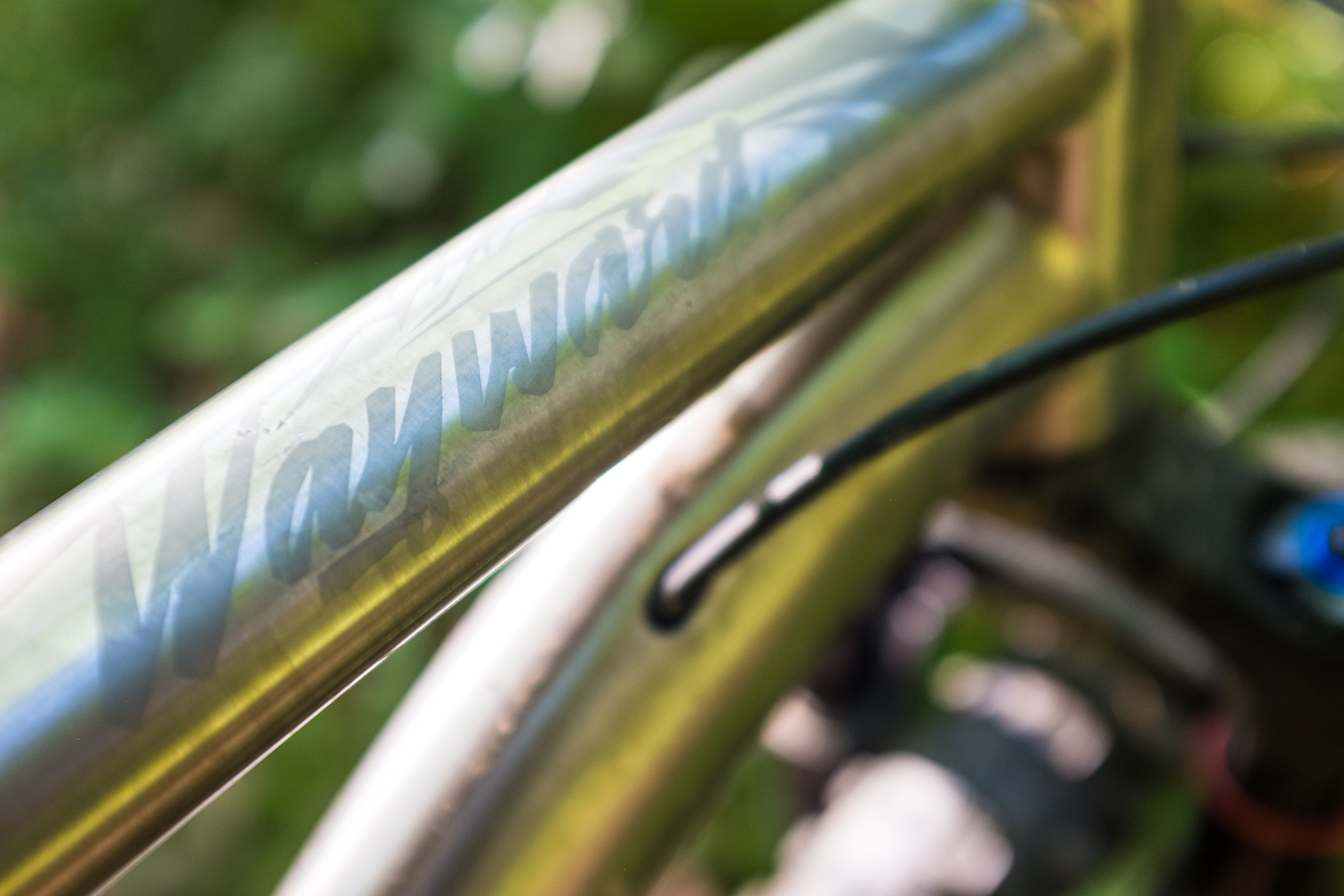
The build kit makes the Wayward a great backcountry hardtail. The RockShox Pike was flawless: smooth, stiff and squishy in all the right places. The Industry 9 Backcountry wheels with 29×2.8 Terrene McFly tires were grippy in corners and fast up climbs. However, if I were headed out for an extended tour, I would swap the proprietary aluminum spoke Backcountry wheels for a traditional steel j-bend wheel. Aluminum spokes can break when nicked by rocks, and it’s pretty tough to find replacements.
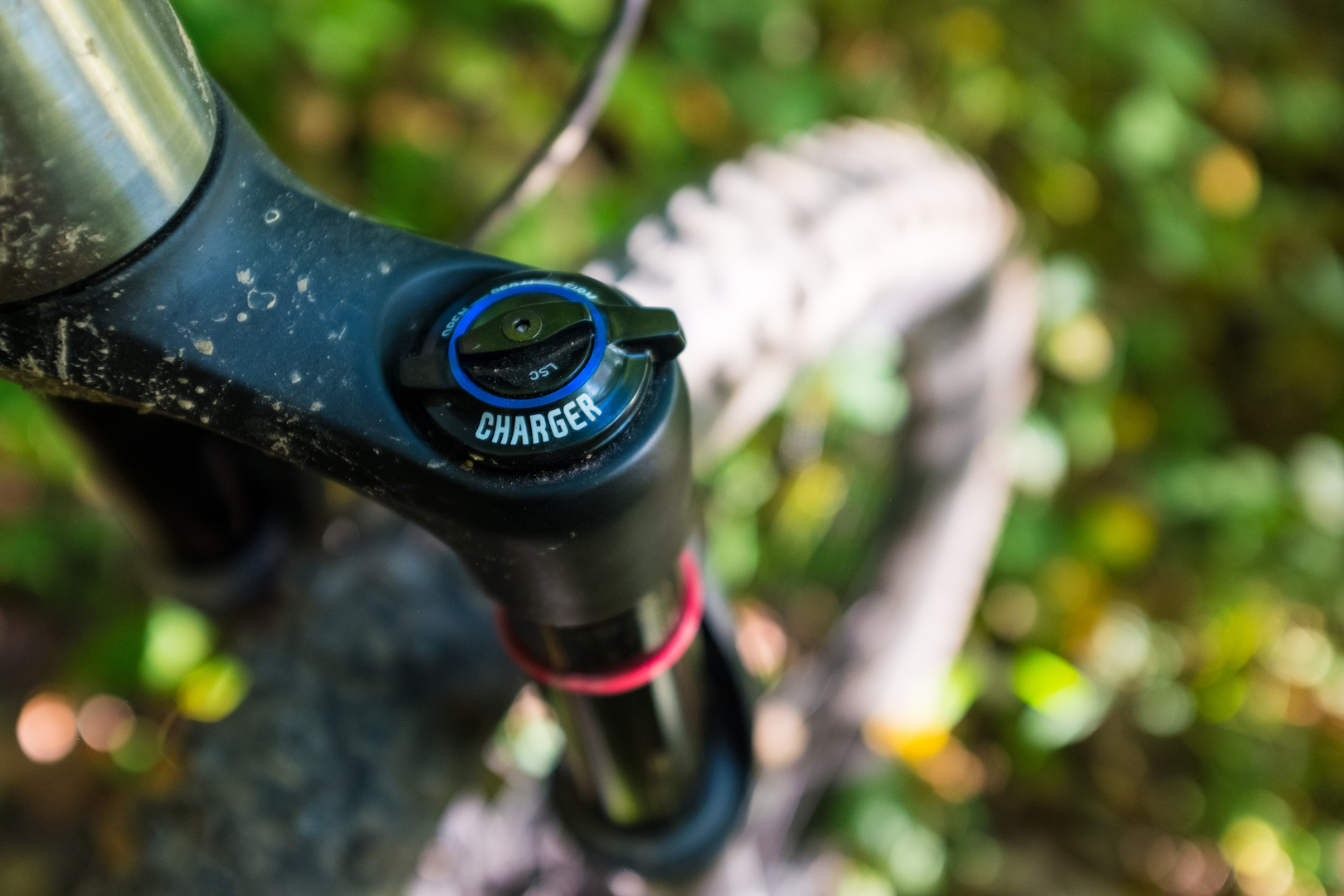
My favorite wheel size for long rough rides is 29+. Nothing rolls like a tire with a 30-inch diameter. For distance riding, the only downside to such a big wheel is that they’re too tall for riders under about 5’6”. Along with toe overlap issues, shorter riders don’t have space for a seat bag (for this reason, the Wayward isn’t offered in a size under medium).
The SRAM Eagle drivetrain had plenty of range and shifted snappily, and Why’s derailleur hanger is stout and stayed in plane. In the case of a derailleur disaster, the Wayward has sliding dropouts for easy single speed conversion. The four-piston SRAM brakes have plenty of stopping power, but if I were going on a long bikepacking trip, I would swap them out for a two-piston, or a mechanically actuated brake. I’ve ridden a multi-month trip with four-piston calipers and found that the performance gain isn’t worth the hassle of having to balance sticky pistons in the field.
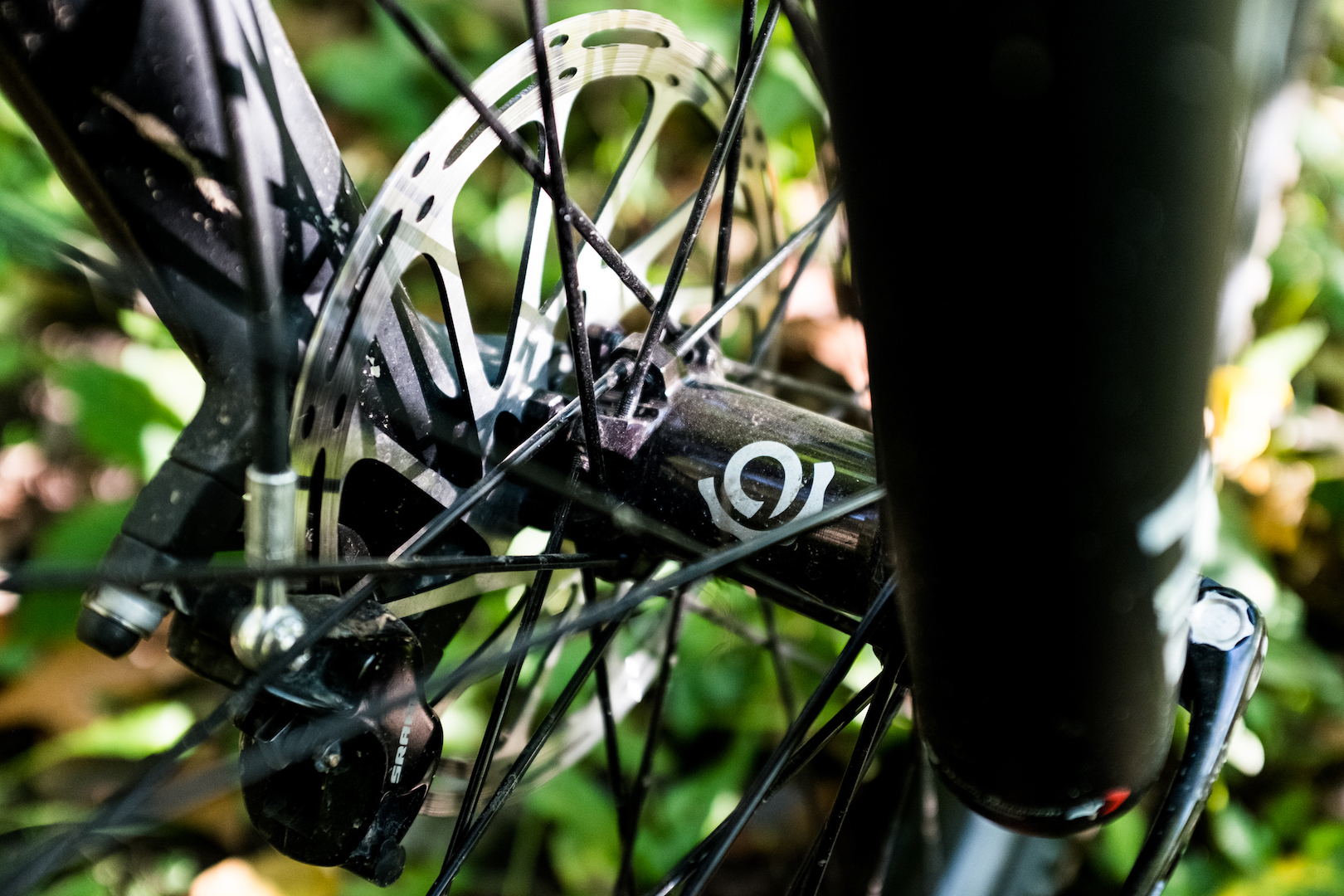
THE RIDE
The Wayward’s geometry and fit hit the sweet spot; a 68.3-degree head angle and long front-center make for stable cornering, but the steering is still responsive enough for technical climbs and slow-speed maneuvers. A short 35 mm stem keeps the front end easy to loft, and wide bars help when muscling the bike through the rocks. The 440 mm chainstays aren’t overly long nor especially short, which keeps the ride comfortable. This is not a super playful, poppy hardtail. It’s also not a flaccid soggy dumpling, like some bikepacking-specific bikes that I’ve ridden. The Wayward rides good, that’s it. Nothing crazy, just easy and predictable.

My only fit issue was with the steepish 73.5-degree seat tube angle. Although it helped keep the front end down when climbing in the saddle, I had some discomfort since my knees were too far over the pedal spindle. I have long legs for my height, so more evenly proportioned riders would probably be fine. On standing climbs, the steep seat angle led me to be regularly violated by the painfully sharp chisel-tipped saddle, which hovered around my rear like an anus seeking missile.
The front triangle with a bent top tube allows for more standover but means that there’s less room for a big frame bag. I’d prefer to have more frame bag space, and wouldn’t mind having to tilt the bike when dismounting.
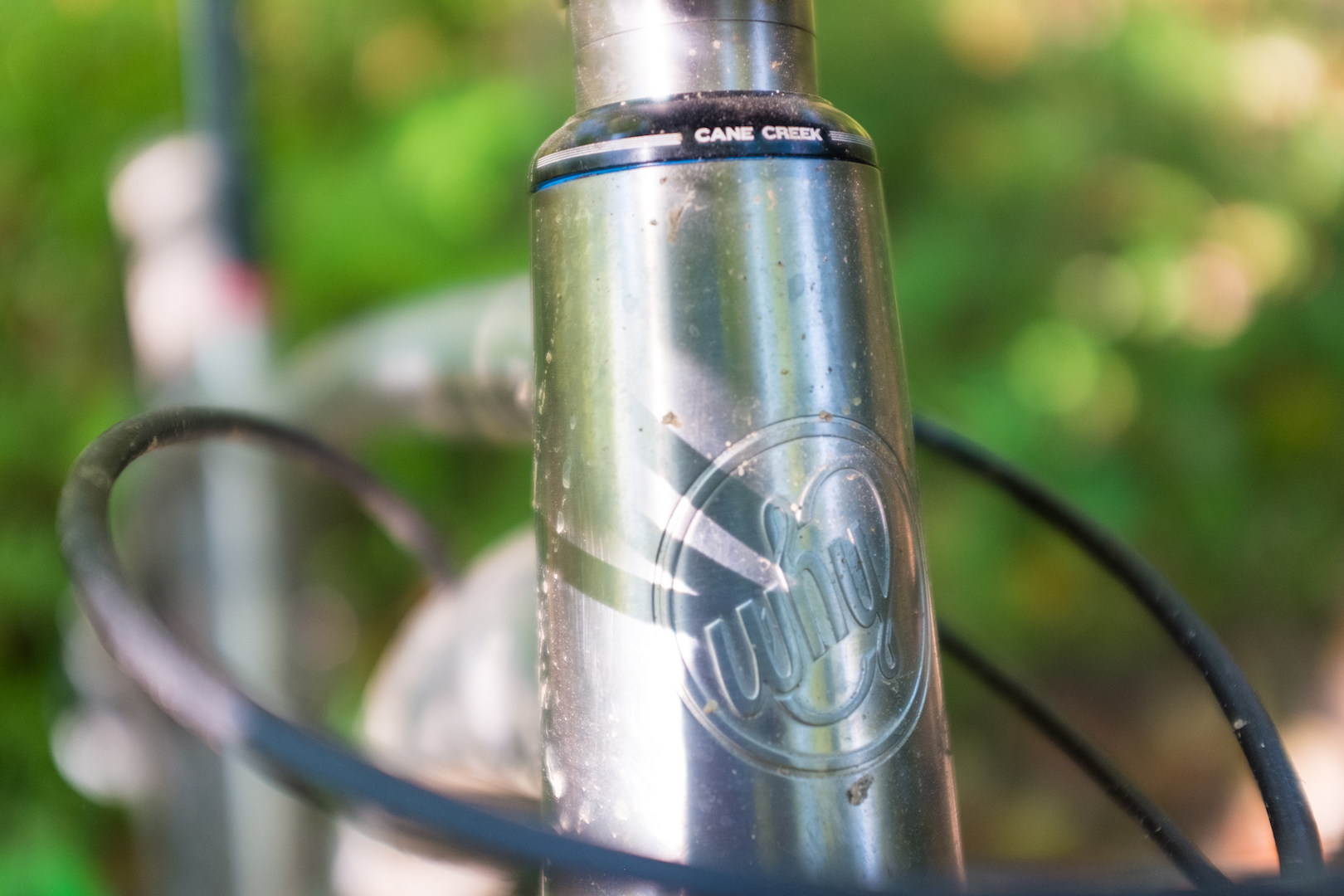
FINAL THOUGHTS
At $2,449 for a frame, the Chinese-made Wayward is in an interesting price category. While it’s significantly less expensive than an American-made titanium frame, it’s priced about $500 more than many super talented frame builders charge for full custom steel. On a burly hardtail, titanium and high-end steel perform comparably. So the Wayward’s main advantage over a custom frame seems to be that it’s immediately available (most builders have at least a couple months of wait time).

The Wayward is the lightest plus bike I’ve been on, and one ride on this thing will totally dispel any notion that chubby bikes are sluggish. As built, it’s maybe a little fancy for a multi-month tour, but for more focussed local bikepacking, it would be great. This is a seriously smooth hardtail that makes a case for ditching the full suspension.
Words & Photos by Montana Miller
Price: $5,899
Sizes: M, L (tested), XL
Online: whycycles.com
Tester: Montana Miller
Age: 28
Weight: 150 lbs.
Height: 5’ 9”
Inseam: 31”